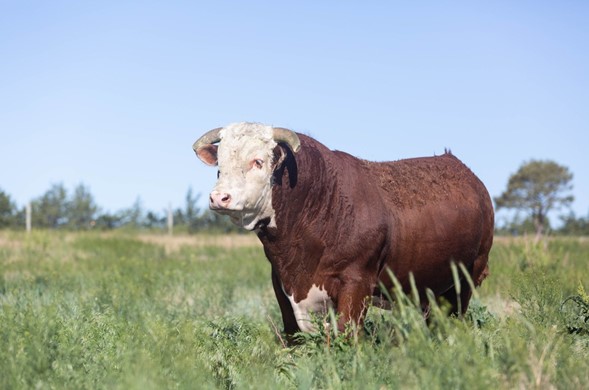
Mark Johnson, Oklahoma State University Extension Beef Cattle Breeding Specialist, offers herd health advice as part of the weekly series known as the “Cow Calf Corner,” published electronically by Dr. Derrell Peel, Johnson, and Paul Beck. Today, Johnson talks about herd bulls and the value of genetic potential.
The spring 2025 bull sale season is underway. One economically important objective of the breeding season is to get cows bred to bulls with the highest possible genetic values. With more information available ever before, cow-calf producers need to evaluate this volume of information from their own unique perspective. How is this accomplished? Answer the following questions:
- How and when do you intend to market your calf crop? (at weaning, as yearlings, as fed cattle, as bred heifers or open replacement females).
- To what type females will you be mating the bull? (heifers or cows? will help determine the degree of selection pressure to apply to calving ease)
- Will you be selecting herd replacements from the resulting heifers?
Most sale books will include individual performance of the bulls, Expected Progeny Differences (EPDs) for as many as 20 traits, and bio-economic indices. These include multiple genetic predictors of calving ease, several traits that would be considered as maternal performance, growth at different ages, feed intake and feed efficiency. In addition, several traits indicating carcass merit such as marbling, ribeye size, external fat thickness and carcass weight. A Bio-economic index is a genetic value derived from assigning an economic weighting to several EPDs based on their anticipated value at a specific marketing endpoint.
Bulls are a significant cost to an operation. With proper selection goals and investing wisely, bulls have the potential for high economic returns. While the most expensive bull may not be the best fit for your operation, there is a correlation between bull sale price and the genetic potential transmitted to calves. Over the past three years, CattleFax survey participants indicate that for every additional $2,500 spent on a bull, the average calf price increased by $82 per head. Assuming a bull sires 100 calves over his lifetime of service, that is a return of $8,200. Furthermore, there is data from multiple sources that supports the belief that superior genetics adds value to an operations bottom line.
We are part of an industry in which buyers of cattle (at any age or type) are increasingly willing to pay for documented genetic potential. Determine the traits that stand out as more economically relevant to your marketing plan when deciding how to invest your bull buying dollar. Purchasing bulls offering strong genetic values can and will pay off for your operation.

















